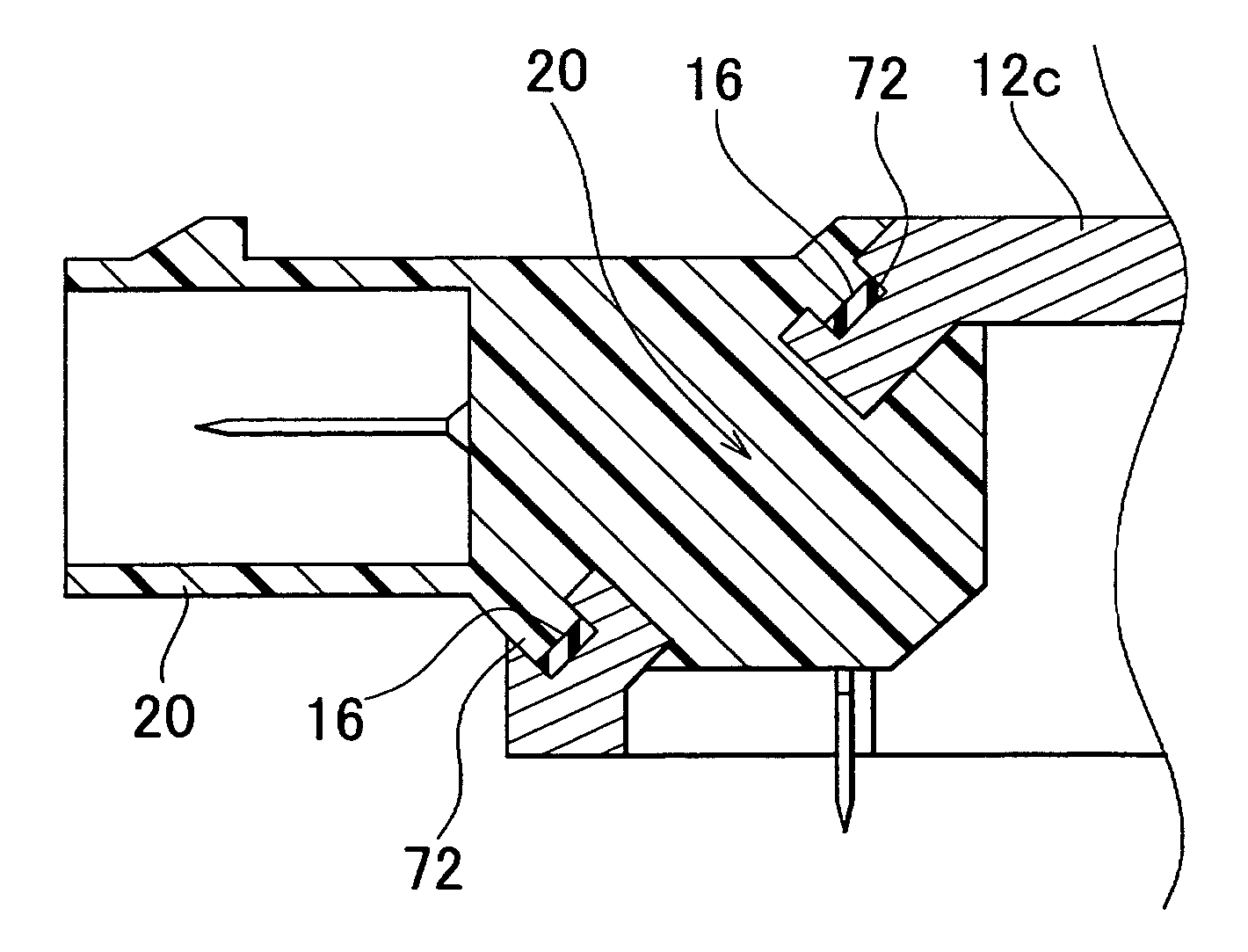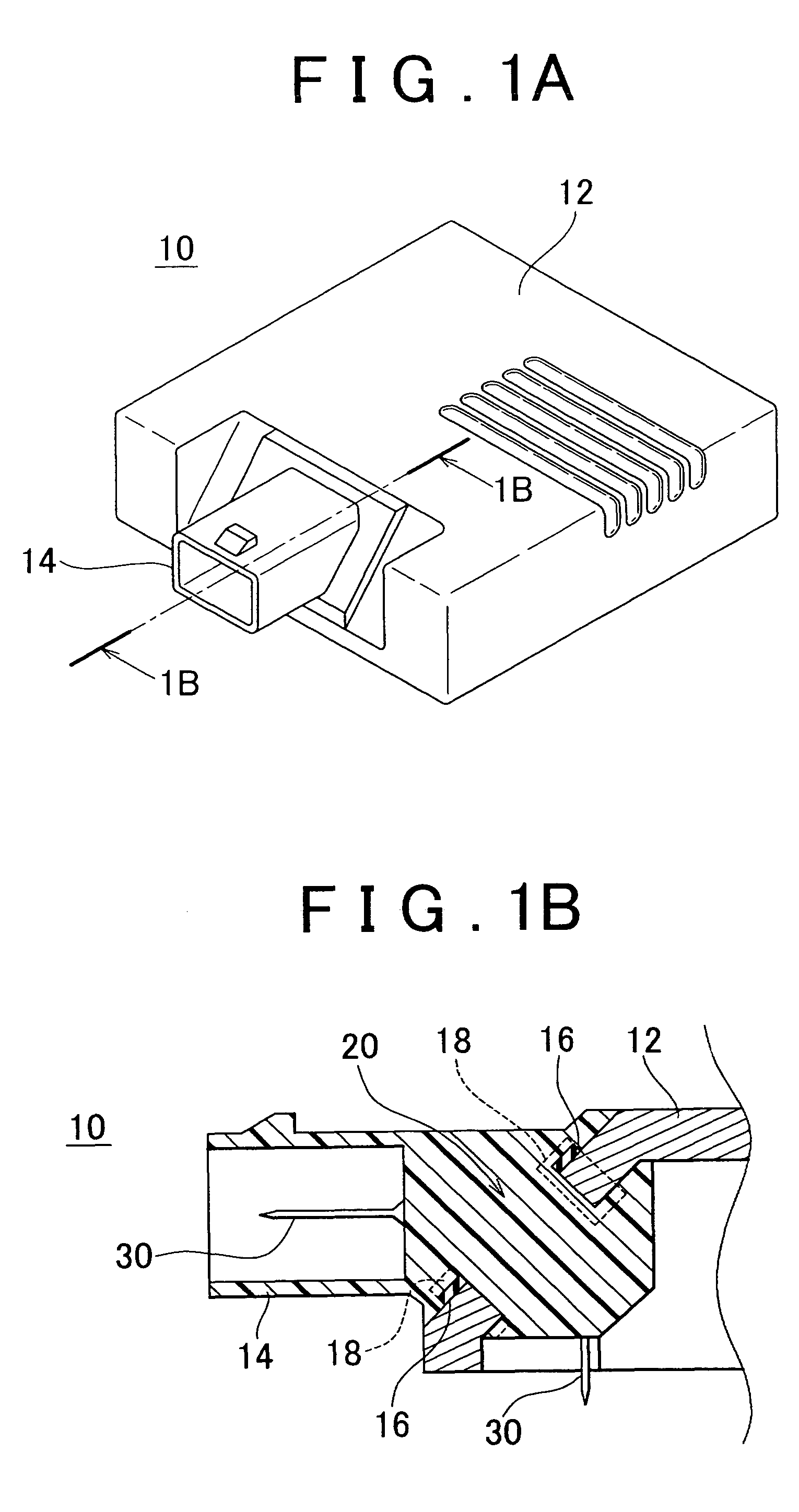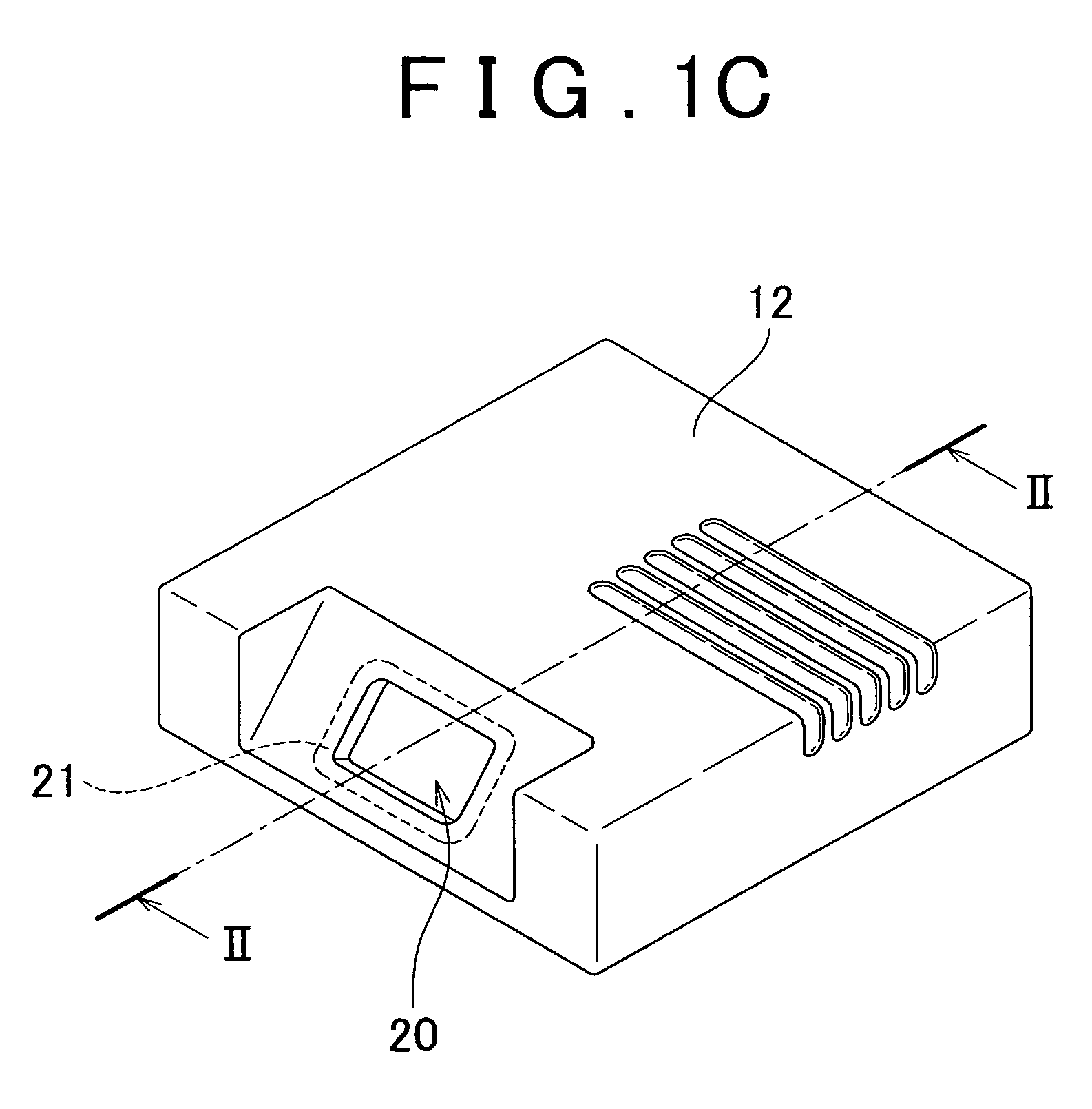Molded article production method and molded article
a technology of molded article and production method, which is applied in the field of molded article production method and molded article, can solve the problems of insufficient expansion of thermally expandable material, detrimental to the air tightness between the resin part and the main body, and the inability to sufficiently compress the injection molding of the resin part with the sealant, etc., and achieves cost-effective effects
- Summary
- Abstract
- Description
- Claims
- Application Information
AI Technical Summary
Benefits of technology
Problems solved by technology
Method used
Image
Examples
first embodiment
[0053]Referring now to FIGS. 1A-1C, general description will be given to a connector case (molded article) 10 produced by using a method in accordance with a first embodiment of the present invention.
[0054]FIG. 1A is a schematic perspective view showing a connector case 10 produced by using the method in accordance with the first embodiment of the present invention, FIG. 1B is an enlarged vertical cross-sectional view taken along line 1B-1B in FIG. 1A to illustrate the surroundings of a connector part 14, and FIG. 1C is a schematic perspective view depicting a main body part 12 of the connector case 10. The first embodiment is directed to a method for producing a connector case 10 in which a resin-made connector part (resin part) 14 is molded in an opening 20 of a metallic main body part 12 by using an injection molding process.
[0055]As shown in FIG. 1A, the resin-made connector part 14 is molded onto the main body part 12 through an injection molding process. As is apparent in FIGS...
second embodiment
[0082]Next, a second embodiment of the present invention will be described with reference to FIGS. 9 and 10. FIG. 9 shows a closed mold in the second embodiment and corresponds to FIG. 6, which was referred to when making description on the molded article production method of the first embodiment. FIG. 10 illustrates the cavity of the mold when the resin is injected in the second embodiment and corresponds to FIG. 7, which was referred to when making description on the molded article production method of the first embodiment. In the second embodiment, the retainer 18 is not attached to the main body part 12. Thus, the main body part 12 of the condition as shown in FIG. 2 is disposed on the bottom mold 22 and, subsequently, the steps of the first embodiment illustrated in FIGS. 4 and 5 are carried out.
[0083]In accordance with the second embodiment, the top mold 24b includes a compression member 50a that can be moved within the cavity 36 in the thickness direction of the foam sealant ...
third embodiment
[0089]Next, a method of producing a molded article in accordance with a third embodiment of the present invention will be described. In the third embodiment the foam sealant 16 is compressed by the pressure of resin acting in the injection process of the molten resin. According to this method, the foam sealant 16 is attached to the external surface of the peripheral portion 21 around the opening 20 of the main body part 12, as shown in FIG. 2 and placed within the mold. Subsequent steps are the same as the steps described earlier in connection with FIGS. 4 through 8, except that the retainer 18 is not used. In the following, the third embodiment will be described with reference to FIGS. 4 through 8 on the premise that the retainer 18 is not attached to the main body part 12.
[0090]In the third embodiment, the top mold 24, the bottom mold 22, the slide mold 26 and a portion of the main body part 12 are combined to define the cavity 36 when the mold is closed as illustrated in FIG. 6. ...
PUM
| Property | Measurement | Unit |
|---|---|---|
| compression ratio | aaaaa | aaaaa |
| compression ratio | aaaaa | aaaaa |
| compression ratio | aaaaa | aaaaa |
Abstract
Description
Claims
Application Information
 Login to View More
Login to View More - R&D
- Intellectual Property
- Life Sciences
- Materials
- Tech Scout
- Unparalleled Data Quality
- Higher Quality Content
- 60% Fewer Hallucinations
Browse by: Latest US Patents, China's latest patents, Technical Efficacy Thesaurus, Application Domain, Technology Topic, Popular Technical Reports.
© 2025 PatSnap. All rights reserved.Legal|Privacy policy|Modern Slavery Act Transparency Statement|Sitemap|About US| Contact US: help@patsnap.com



